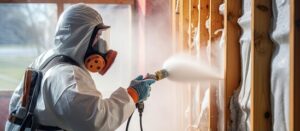Natalie Wood was a doe-eyed child star who tugged at audiences’ heartstrings on screen. She was also a woman who found strength and purpose in her career and relationships.

Finstad examines new evidence—including the LASD’s “Murder Book,” ignored by investigators—and expands on intimate details from Wood’s unpublished memoir. She also explores the betrayal by her first husband, Robert Wagner.
When Natalie Wood charmed audiences in the 1947 Christmas film Miracle on 34th Street, she was the face of a young America poised for change. The daughter of Russian immigrants, she represented a new generation that grew up during and after World War Two with heightened racial and cultural awareness.
Her mother, Mary Tatuloff, had unfulfilled dreams of becoming a dancer and transferred them to her daughter. From a young age, Wood was taken to the cinema, where she studied films of Hollywood child stars. Her mother forbade her from visiting friends’ homes and she was never allowed to leave the house alone. As she grew older, she rebelled against her mother’s authority and the press covered every act of defiance.
By her 18th birthday, Wood was in love with 26-year-old contract player Robert Wagner. She asked her agent to set up a date, despite her mother’s objections. They married a year later but separated and divorced in 1962.
In 1969 Wood married British producer Richard Gregson and gave birth to their daughter Natasha the following year. The marriage was short lived and she divorced Gregson in 1971.
During her lengthy career, Wood starred in 56 films for the big screen and television. Many of these films were considered classics. She won three Oscar nominations for her performances and received two Golden Globe Awards. She was also one of the few actresses who transitioned from child roles to teenage and middle aged roles. Throughout her career, she believed that people who drew lines between movies and television were snobbish and that good work was good work regardless of the medium in which it was produced.
Childhood
Houston lawyer Suzanne Finstad interviewed more than 400 people for her myth-shattering book, including Natalie Wood’s sister Lana (who also narrates the audio version). She paints a portrait of a troubled star who was haunted by demons that she carefully hid to present herself as a confident, carefree movie star. Finstad details the deep-seated fears, obsessions and conflicts instilled in her by her mother Maria that may have played a role in Wood’s early tragic death at age 43.
Wood was born Natalia Nikolaevna Zakharenko in San Francisco, California, to Russian immigrants. Her mother’s dreams of a career in ballet were unfulfilled, so she encouraged her daughter to pursue acting and took her to the movies to study the work of other child stars. From the late 1940s to the mid-’50s, Wood was one of Hollywood’s most active child actors. She tugged at hearts with her small roles in films such as 1946’s The Ghost and Mrs. Muir and 1950’s Never a Dull Moment, but she really caught on as Santa Claus-believing kid in 1947’s Miracle on 34th Street.
By the time Wood was 20, she had starred in more than 50 films. She suffered from depression and a lack of confidence, which resulted in numerous unsuccessful relationships. In addition, she was plagued by drug and alcohol abuse.
Wood married twice and divorced without having children with either man. She devoted much of the 1970s to her family, and appeared in just four more theatrical films, including the thriller Peeper (1975), the science fiction film Meteor (1979) and the 1980 comedy The Last Married Couple in America. Her final film, Brainstorm, a drama with Christopher Walken, was released posthumously.
Early Career
Natalie Wood started her acting career as a child star at age four. Her first scene, in 1943’s Happy Land, lasted just 15 seconds but attracted the attention of director Irving Pichel, who kept in touch with her family over the next two years and helped secure her a role in 1946’s Tomorrow Is Forever, which launched her to fame as one of the biggest child stars of her time.
At the beginning of her teen years, Wood appeared in a number of TV shows and films including The Pride of the Family, The Pepsi-Cola Playhouse, Mayor of the Town, and the Max Liebman Spectaculars. In 1955 she was nominated for an Oscar as Best Supporting Actress in Rebel Without a Cause, a film about adolescent angst that earned her the nickname “Teenage Natalie.” THR praised the film for its “superb acting” and called Wood “the film’s true star.”
By the late ’50s, Natalie Wood had established herself as one of Hollywood’s most popular actresses. She starred in the classic musicals West Side Story and Gypsy, in which she showcased her singing voice. Her supporting role in the 1956 film noir Splendor in the Grass earned her another Oscar nomination.
In 1957, Natalie Wood dated actor Robert Wagner, whom she married in 1960. The couple’s short-lived marriage produced a daughter, Natasha, who resembled her mother. As her career continued to grow, Wood began to take on more mature roles and rebuffed film producers who tried to limit her role selection. She fought a brief standoff with studio boss Jack Warner over her choices and ended up with a contract that allowed her to choose one picture a year. This left her free to concentrate on more challenging roles.
Personal Life
Wood’s personal life was as turbulent as her film career. She made tabloid headlines for her first marriage, to actor Robert Wagner, eight years her senior, in 1957, and dated a number of well-known men including Warren Beatty, Arthur Loew Jr and Ladislav Blatnik.
Wood appeared in a number of films as a teenager, but her career took off after she co-starred with James Dean and Sal Mineo in Rebel Without a Cause (1955). The film was a landmark for its depiction of teenage rebellion and angst and won an Academy Award for Wood. She also received critical acclaim for her role in West Side Story (1961), as the restless Maria, opposite Leonardo DiCaprio and Richard Widmark.
In later years, Wood struggled with alcoholism and depression and stumbled through a series of failed relationships. The actress starred in a number of television shows, and in a 1977 production of Tennessee Williams’ Cat on a Hot Tin Roof received excellent reviews for her performance.
After her remaritalization with screenwriter Richard Gregson, who was also her child’s father, Wood began to focus on family and less on films. She only made four more theatrical films before her death, the mystery comedy Peeper (1975), the science fiction Meteor and the sexy drama Brainstorm (released posthumously).
Natalie Wood died in 1982 of an apparent suicide at age 43, drowning near Santa Catalina Island in California. The circumstances surrounding her death remain unclear; rumors surfaced that she had been involved in an extramarital affair with the boat’s captain, Dennis Davern, and that he may have been responsible for her death. A book by Suzanne Finstad titled Natasha: The Biography of Natalie Wood, originally published in 2001 and republished in 2020, is the most comprehensive account of the late star’s life and death.
Death
Natalie Wood rose to fame at age 16 for her role as Maria in the film West Side Story and stayed in Hollywood for decades, appearing in 56 films. Despite her talent and fame, she struggled with depression and self-image. Her first marriage to actor Robert Wagner, eight years her senior, attracted a lot of attention; however, the couple divorced before having children. She later married screenwriter Richard Gregson and had a daughter, Natasha, before going into semi-retirement in the 1970s, appearing in just four more theatrical films including Switch and Brainstorm before her death at age 43 on Nov. 29, 1981, in a cove off Santa Catalina Island, Calif.
On the night of her disappearance, Wood was on a boating trip with Wagner and her Brainstorm co-star Christopher Walken. According to the boat’s captain, Dennis Davern, they had argued on deck and then Wood went back to her state room. He heard a loud argument again and then the boat went silent. The next morning her body was found about a mile away from the boat. It was unclear how she entered the water, but unexplained bruising on her arms, legs, and left wrist could have occurred before her death.
Authorities have never determined what happened to her, but they did reopen the investigation in 2018 after receiving more information from people who claimed they had heard claims that Wood and Wagner were fighting shortly before she disappeared from their yacht. They also found that the bruises on her body were consistent with someone being thrown from a boat and made her death suspicious. Wagner was named as a person of interest, but no charges were ever filed against him.
